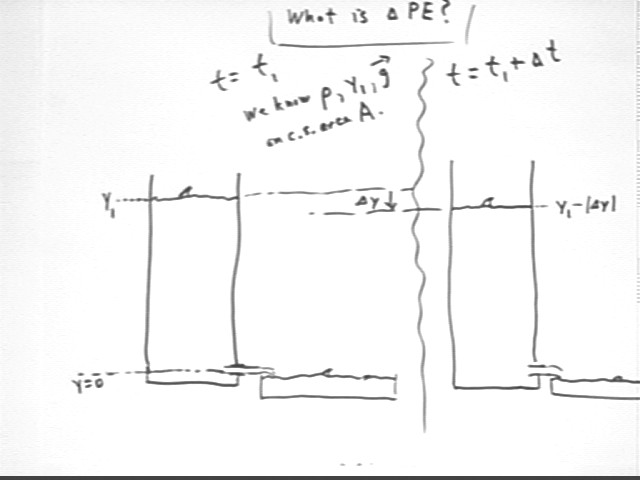
Analysis of depth vs y including energy and continuity equation
Relevant Ideas are outlined below.
As water flows out of the container the PE of the water in the container decreases.
We will express our results in terms of density rho, vertical displacement y1, acceleration of gravity g and cross-sectional area A. We will think of the change occuring between clock times t = t1 and t = t1 + `dt, for some small `dt.

Formally recall that the change in the PE of a system is equal to the work done BY the system against the total conservative force.
In this case the conservative force is that of gravity.
We will consider what happens to the PE of the system when a slice of water is vertically displaced thru `ds = -y1. We note that this displacement is in the direction of the gravitational force.
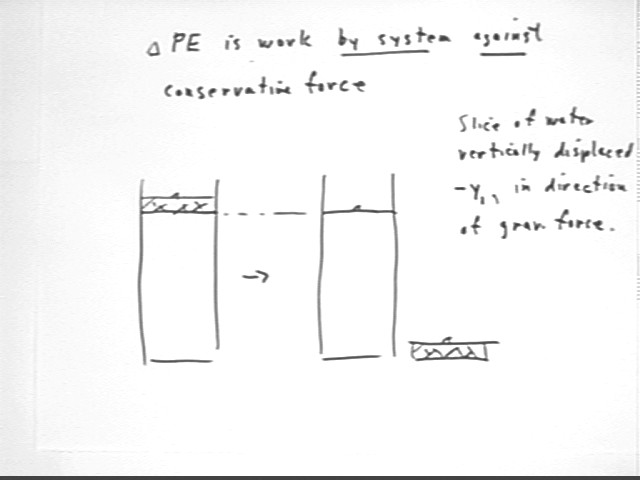
It is easier to think of the work done by gravity ON the system. The work done BY the system against gravity will be the negative of this quantity.
To find the work done by gravity on the slice we find the force exerted by gravity on the slice, and multiply by the vertical displacement, assuming a downward vertical displacement.
Our final conclusion is the FgravON, the force exerted by gravity on the slice, is
This force acts parallel to the displacement, so the work done by gravity on the system is positive and we have
It follows that the change in potential energy, which is equal to the work done by the system against gravity, is
We see that, as we saw intuitively, the PE of the system decreases.
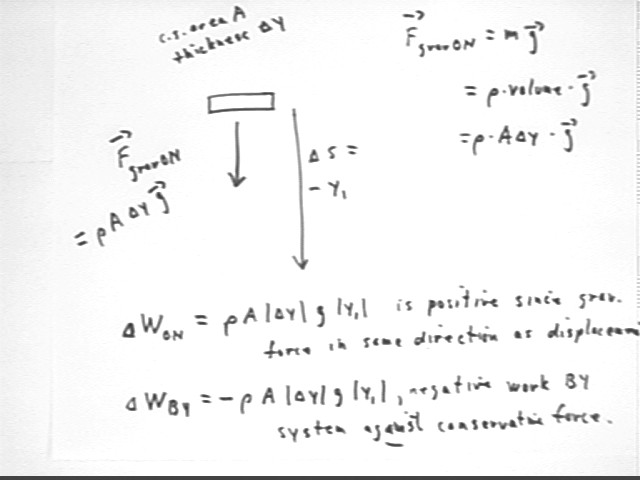
The law of conservation of energy tells us that `dKE + `dPE + `dWnoncons = 0, where `dWnoncons is the work done by the system against nonconservative forces.
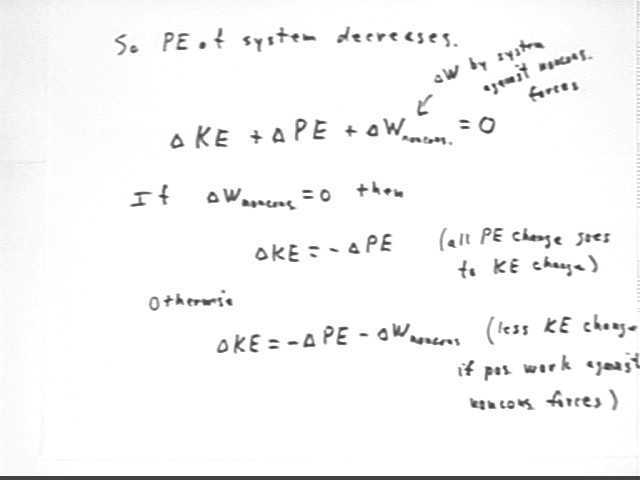
In the system we are considering the velocity of the water in the container is presumably small so that the KE of the water in the system is negligible. In this case, if we begin with a stationary system (or a system moving with constant velocity) and open the tube we will after a short time have a system with reduced PE, therefore with increased KE.
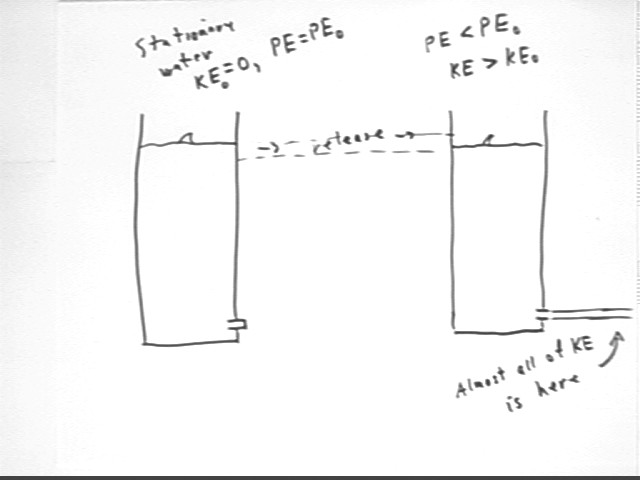
The exit velocity of the water is related to the velocity with which the water surface moves. We can see this relationship by comparing the amount of water lost from the container to the amount of water leaving the tube in some short time interval `dt. These amount will of course be equal.
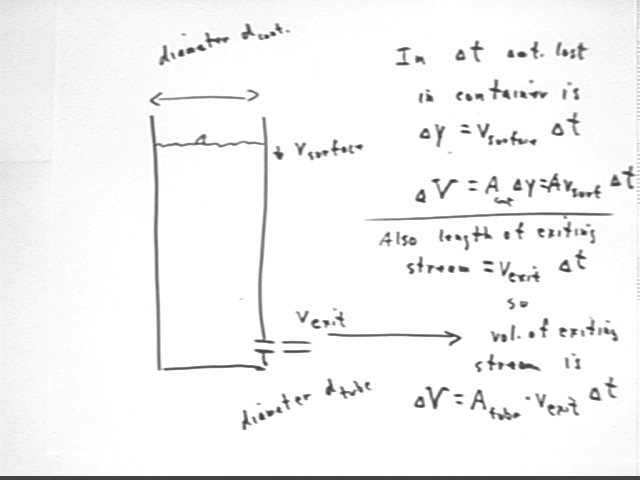
Since what comes out of the tube is equal to what left the container, the two expressions for the volume must be equal.
Setting the two expressions equal we easily solve to find that vExit = vSurface * Acontainer / Atube. That is, the exit velocity is equal to the velocity of the surface multiplied by the ratio of the cs areas.
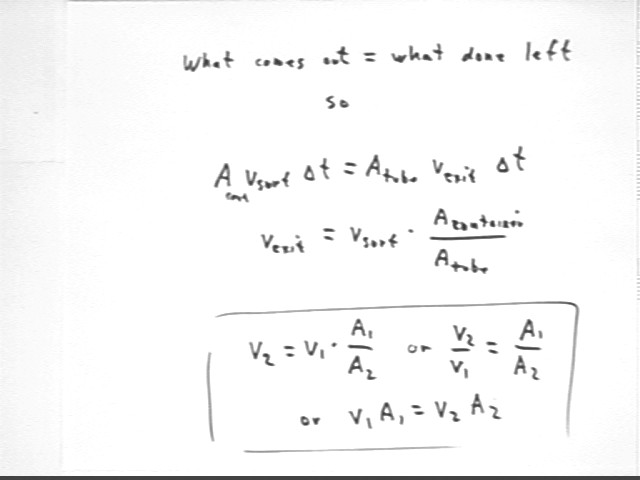
Expressing this result using subscripts 1 and 2 instead of 'surface' and 'tube' we obtain the equivalent general equations
These equations apply to any incompressible fluid in a closed system. The third of these is the usual expression of this result, and is the usual form of what we call the Continuity Equation. All three forms are, of course, equivalent.